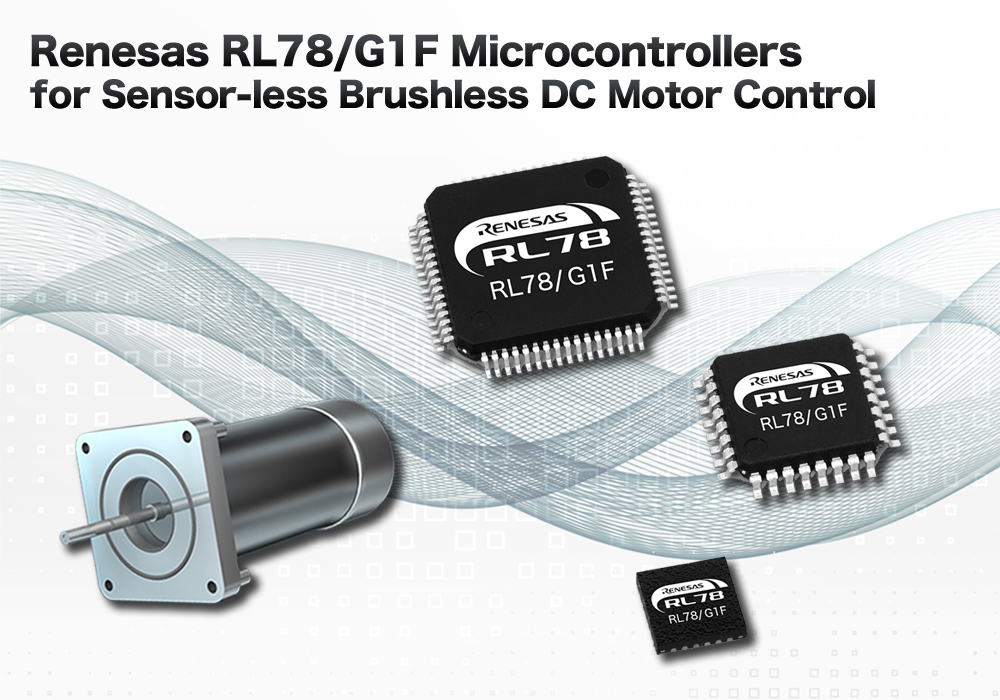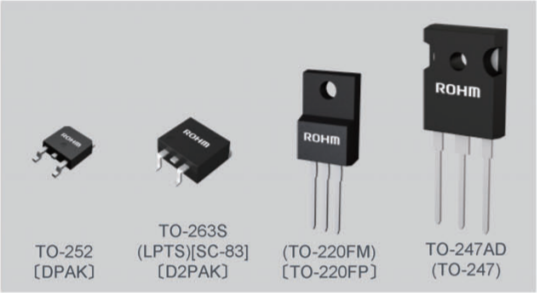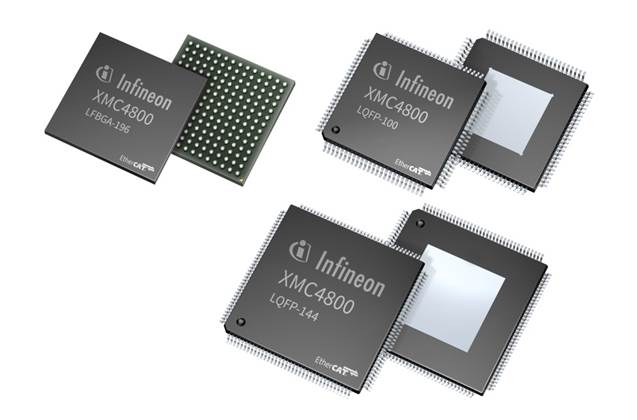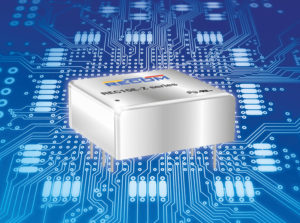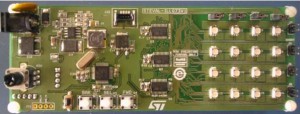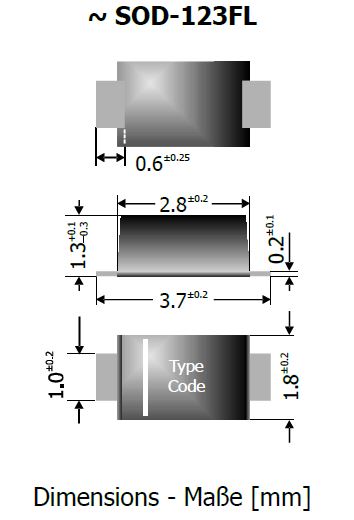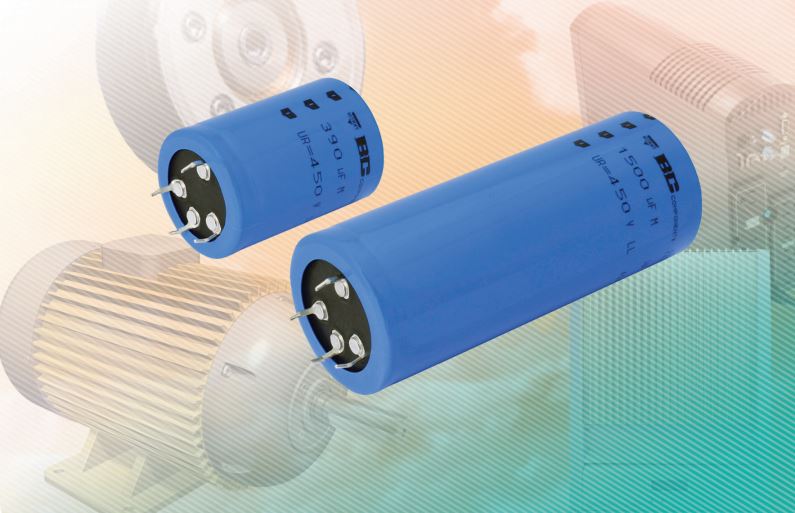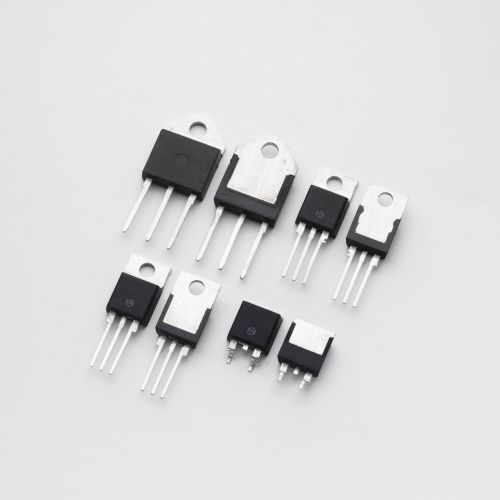Renesas Electronics Simplifies Sensor-less Brushless DC Motor Control Design for Home Appliance and Electric Power Tool Applications
RL78/G1F Microcontroller Integrates High-Speed Timer, Comparator, and Enhanced Peripherals to Achieve Higher Motor Speeds and Reduced Systems Costs
Renesas Electronics, a premier provider of advanced semiconductor solutions, today announced the RL78/G1F Group of multi-function microcontrollers (MCUs), adding 20 new members to its low-power RL78 Family of MCUs. Featuring enhanced peripheral functions and compatibility across the RL78/G1x Series of MCUs, the new devices simplify sensor-less brushless DC motor (BLDC motor) control and deliver precision operation at faster rotational speeds with high accuracy for energy-efficient home appliances and electric power tools.
The need for more efficiency and reduced system costs for motor-driven appliances, such as vacuum cleaners, dishwashers and refrigerators, as well as electric power tools are driving a shift from traditional motors with built-in position sensors to sensor-less BLDC motor systems. The new RL78/G1F MCUs integrate fast 3-phase timer and dedicated comparators and operational amplifiers to ensure high-speed sensor-less control. The peripheral functions required for sensor-less control, including high-speed timers and comparators, contributing to reduction of up to 20 external components and lower development costs. In addition, Renesas has added an auxiliary timer designated for motor control to enable better control at a wider range of speed.
Key features of the RL78/G1F MCUs:
-
(1) Dedicated motor control subsystem with the new auxiliary timer supports operation at up to 64 MHz
In addition to the pulse width modulation (PWM) output timer supporting operation at 64 MHz (max.) offered on Renesas’ existing MCUs, the RL78/G1F has a new auxiliary timer for motor control that operates at the same clock frequency. By combining this timer and the high-speed comparator, the new MCUs enable position sensing without a sensor even when the rotor is stationary, and at high rotational speeds of over 30K rpm under 120-degree conducting control. This makes it possible to realize sophisticated motor control from the start-up to high-speed rotation at low cost.
-
(2) Software configurable, high slew rate PGA reduces cost and simplifies development
The on-chip programmable gain amplifier (PGA) has a high slew rate of over 3.0 V/µs (min.) and a variable amplification factor from 4x to 32x, selectable by software. This eliminates the need for an external amplifier for voltage detection or overcurrent detection used in BLDC motor control. The PGA is designed with input and feedback resistor ground pins that enable amplification while reducing high-current noise to the MCU.
-
(3) Two-channel high-speed comparator enables reliable overcurrent detection and rotor position detection
The RL78/G1F integrates a two-channel high-speed comparator with a response time of 70 ns (typ.), eliminating the need for an external comparator. One channel can use the PGA output as its input signal, enabling implementation of overcurrent detection for the inverter circuit during brushless motor control. Reliable overcurrent detection can be achieved from built-in functionality (PWMOPA) that uses the comparator output directly to cut off the output signal to the inverter circuit. The other comparator channel allows the user to select any combination of positive and negative inputs among four input pins to implement rotor position detection for sensor-less BLDC motor control, basically to manage the motor Back EMF signals. Both comparator channels allow selection of external pin input, the internal reference voltage, or the dedicated generation D/A converter output as the negative input.
-
(4) D/A converter and IrDA (Infrared Data Association) communication function
The RL78/G1F integrates a one- or two-channel D/A converter, a feature not previously available on comparable products with 64 KB of flash memory or less. Renesas also added IrDA support to the serial communication functionality, broadening the range of possible applications, such as simplifying diagnostics, monitoring, e-locks, or handy terminals.
-
(5) 4 mm × 4 mm package reduces PCB footprint for more compact applications
The product lineup includes 24-pin HWQFN and 36-pin WFLGA compact 4 mm × 4 mm square packages. The 36-pin WFLGA products are particularly well suited for more space-constrained devices. While they have a low pin count, the MCUs support dual power supplies, allowing the CPU to operate at 3 V or 5 V while supporting communication at 1.8 V with external devices without the need for an external level shifter. Either an internally generated subclock or one input externally can be used, allowing low-power operation or intermittent operation over extended intervals to cut power consumption and extend battery life.

